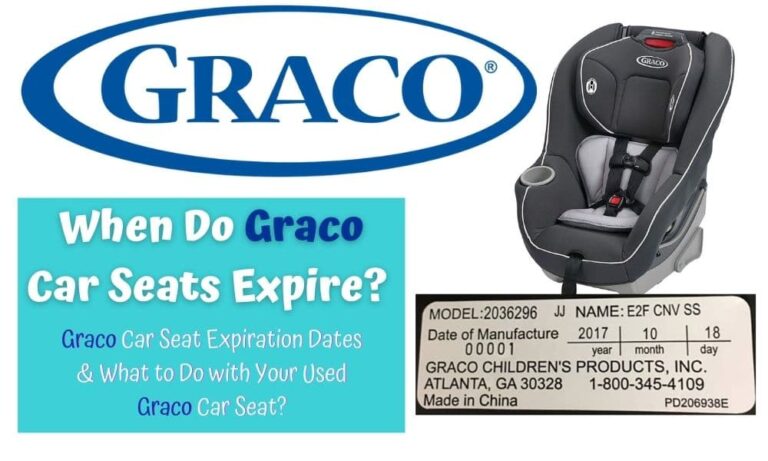Car Brand Signs: The Silent Ambassadors of Automotive Identity
Car Brand Signs: The Silent Ambassadors of Automotive Identity cars.truckstrend.com
In the bustling world of automotive commerce, where sleek designs, powerful engines, and innovative technologies vie for consumer attention, there exists a crucial, often understated, element that forms the bedrock of brand recognition and trust: the car brand sign. More than just a logo on a building, a car brand sign is a meticulously crafted physical manifestation of a company’s identity, values, and promise. It is the first point of contact, a silent ambassador that communicates volumes before a single word is spoken or a car is test-driven.
From the iconic three-pointed star gracing a luxury dealership to the vibrant signage illuminating a bustling service center, car brand signs are ubiquitous. They are the beacons that guide customers, the symbols that evoke loyalty, and the constant reminders of a brand’s presence in a highly competitive market. This comprehensive guide delves into the multifaceted world of car brand signs, exploring their strategic importance, diverse types, design considerations, and the practicalities of their implementation and maintenance. Understanding their power is not just about aesthetics; it’s about leveraging a critical tool for marketing, trust-building, and ultimately, driving success in the automotive industry.
Car Brand Signs: The Silent Ambassadors of Automotive Identity
The Anatomy of a Car Brand Sign: Beyond the Emblem
When we talk about "car brand signs," we’re encompassing far more than just the emblem affixed to a vehicle’s grille. It refers to the entire spectrum of visual identifiers that project a brand’s image in the physical world. These signs are carefully engineered pieces of marketing and architecture, designed to be both functional and aesthetically powerful.
At their core, car brand signs integrate several key elements:
- The Logo: The primary graphic symbol representing the brand (e.g., the BMW roundel, the Ford oval).
- The Wordmark: The stylized name of the brand (e.g., "Mercedes-Benz," "Toyota").
- Brand Colors: Specific hues associated with the brand, evoking particular emotions or associations (e.g., Ferrari red, Audi silver).
- Typography: The distinct fonts used for the brand’s name and other textual elements, contributing to its unique voice.
- Materials: The physical substances used to construct the sign, which convey quality, durability, and a sense of permanence (e.g., brushed aluminum, polished chrome, acrylic, LED lighting).
- Lighting: How the sign is illuminated to ensure visibility day and night, whether internal backlighting, external spotlights, or halo effects.

These elements are meticulously combined to create a cohesive visual identity that extends from the smallest vehicle badge to the largest dealership pylon sign. Each sign, regardless of its size or location, contributes to a unified brand experience.
Why Car Brand Signs Matter: Strategic Importance
The significance of well-designed and strategically placed car brand signs cannot be overstated. They serve multiple critical functions that contribute directly to a brand’s bottom line and long-term success:
- Brand Identity and Recognition: Signs provide instant recognition. A distinctive sign allows customers to immediately identify a dealership or service center, differentiating it from competitors and reinforcing brand recall.
- Trust and Credibility: A professional, well-maintained sign projects an image of reliability, quality, and trustworthiness. Conversely, a faded, broken, or poorly designed sign can inadvertently communicate neglect or instability, eroding customer confidence.
- Marketing and Sales Tool: Signs are 24/7 advertisements. They attract passersby, convert curious glances into visits, and act as a constant, tangible reminder of the brand’s presence in the community. For dealerships, they are the primary visual magnet drawing potential buyers.
- Navigation and Wayfinding: At large dealerships or service centers, signs are essential for guiding customers. Clear directional signs for parking, showrooms, service departments, and parts counters improve the customer experience and reduce frustration.
- Differentiation: In a crowded market, unique and memorable signage helps a brand stand out. It creates a distinct visual impression that sets it apart from rivals, contributing to a unique brand personality.
- Emotional Connection: Iconic car brand signs often evoke emotions and associations that go beyond mere functionality. They can represent aspiration, innovation, reliability, or luxury, fostering a deeper connection between the consumer and the brand.
In essence, car brand signs are powerful non-verbal communicators that significantly influence perception, attract business, and solidify a brand’s position in the minds of consumers.
Types and Categories of Car Brand Signs
The world of car brand signs is diverse, with various types serving different purposes and locations. Understanding these categories helps in planning a comprehensive signage strategy:
-
Exterior Dealership Signs: These are the large, prominent signs designed to attract attention from a distance.
- Pylon/Totem Signs: Tall, freestanding structures often seen at the entrance of a dealership lot. They are highly visible from major roads and can display multiple brand logos for multi-brand dealerships.
- Building Fascia Signs: Mounted directly onto the building’s exterior, these include channel letters (individual, illuminated letters), lightboxes (illuminated boxes with a translucent face), or push-through signs. They are the primary identifier of the dealership building itself.
- Monument Signs: Lower to the ground than pylons, these substantial, often stone or brick-based signs provide a more upscale, integrated look, frequently incorporating landscaping.
- Directional & Wayfinding Signs: Smaller signs within the lot guiding traffic to specific areas like customer parking, service bays, or the showroom entrance.
-
Interior Dealership Signs: These signs enhance the customer experience once inside the premises.
- Showroom Branding: Wall graphics, illuminated logos behind reception desks, and branded display stands that reinforce the brand’s aesthetic.
- Informational Displays: Digital screens displaying current offers, vehicle specifications, or interactive kiosks for custom configurations. Also includes static signs for pricing, features, or financing information.
- Service Area Signs: Clear signage indicating service reception, waiting areas, parts departments, and customer amenities.
-
Vehicle-Integrated Signs: These are the signs that become part of the product itself.
- Badging/Emblems: The iconic logos and model names affixed to the exterior and interior of the vehicles. These are crucial for product identification and brand association.
- Decals/Graphics: Promotional wraps, special edition graphics, or race team liveries that enhance a vehicle’s appearance and promote the brand.
-
Event & Promotional Signs: Temporary signs used for specific marketing activities.
- Banners & Flags: Portable, versatile signs for car shows, grand openings, or seasonal sales events.
- Pop-up Displays: Easy-to-assemble branded backdrops and stands for trade shows or off-site promotions.
- Digital Kiosks: Interactive screens used at events or within showrooms to provide dynamic content and engage customers.
Designing and Implementing Effective Car Brand Signs
Creating impactful car brand signs involves careful planning, adherence to brand guidelines, and consideration of practical factors.
Key Considerations:
- Visibility & Legibility: The sign must be easily seen and read from a distance, day and night. This involves choosing appropriate font sizes, high-contrast colors, and effective lighting.
- Material Durability: Signs are exposed to the elements. Materials must be weather-resistant, UV-stable, and durable to withstand harsh conditions and maintain appearance over time. Common materials include aluminum, acrylic, steel, and high-quality vinyl.
- Brand Consistency: Every sign must perfectly align with the brand’s corporate identity guidelines regarding logos, colors, fonts, and overall style. This ensures a unified brand image across all touchpoints.
- Local Regulations & Permits: Signage is heavily regulated by local zoning laws, building codes, and aesthetic ordinances. Understanding and securing the necessary permits is a critical, often complex, step.
- Lighting: Illumination is paramount for night visibility. Options include internal LED illumination (channel letters, lightboxes), external spotlights, or halo lighting (where light emanates from behind the letters). LED lighting is preferred for its energy efficiency and longevity.
- Maintenance: Signs require regular cleaning and occasional repairs (e.g., replacing burnt-out LEDs). Planning for maintenance ensures the sign remains a positive representation of the brand.
How-to Guide for Acquiring Car Brand Signs:
- Define Objectives & Budget: What do you want the sign to achieve? How much are you prepared to invest?
- Site Assessment: Analyze the location for optimal visibility, traffic flow, and existing infrastructure. Consider sightlines from different angles.
- Design Concept: Work with professional sign designers or a marketing agency. They will create mock-ups, suggest materials, and ensure brand compliance.
- Material & Fabrication Specification: Select durable, appropriate materials. The sign company will then fabricate the sign according to the approved design.
- Permitting & Approvals: This is often the most challenging step. The sign company typically handles the permit application process, navigating local regulations.
- Installation: Professional installation ensures the sign is securely mounted, wired correctly, and compliant with safety standards.
- Maintenance Plan: Establish a schedule for cleaning and inspections to preserve the sign’s appearance and functionality.
Challenges and Solutions in Car Brand Signage
While essential, implementing effective car brand signs comes with its own set of challenges:
- Challenge: High Initial Cost: Quality signage, especially large illuminated exterior signs, represents a significant investment.
- Solution: Budget carefully, consider phasing in different types of signs, and focus on long-term value over short-term savings. High-quality materials and LED lighting offer better ROI through reduced maintenance and energy costs.
- Challenge: Maintenance & Wear and Tear: Exposure to weather, vandalism, or simply age can degrade a sign’s appearance and functionality.
- Solution: Invest in durable, weather-resistant materials. Implement a proactive maintenance schedule for cleaning, bulb replacement (if not LED), and structural checks. Many sign companies offer maintenance contracts.
- Challenge: Visibility Issues: Signs can be obstructed by landscaping, other buildings, or poor lighting design, reducing their effectiveness.
- Solution: Conduct thorough site surveys before design. Strategically place signs for optimal sightlines. Invest in professional lighting design to ensure the sign is equally impactful day and night.
- Challenge: Regulatory Hurdles: Local zoning laws, height restrictions, illumination limits, and aesthetic review boards can complicate the approval process.
- Solution: Partner with experienced sign companies familiar with local ordinances. They can navigate the permit process and design signs that comply with regulations while still being impactful.
- Challenge: Brand Guideline Adherence: Ensuring consistency across multiple dealership locations or a vast product line can be difficult.
- Solution: Centralize brand asset management. Provide clear, detailed brand guidelines to all sign manufacturers and marketing teams. Conduct regular audits to ensure compliance.
Practical Advice and Actionable Insights
- Invest in Quality: A sign is a long-term asset. Skimping on materials or design quality will likely lead to higher maintenance costs and a diminished brand image in the long run.
- Prioritize Visibility: Location, size, and lighting are paramount. Ensure your sign can be seen and read clearly by your target audience, both during the day and after dark.
- Ensure Consistency: Every sign, from a monumental pylon to an interior directional sign, should reflect your brand’s identity consistently. Inconsistency dilutes brand recognition.
- Plan for Maintenance: Don’t view a sign as a "set it and forget it" item. Regular cleaning and prompt repairs are essential to maintain its professional appearance and extend its lifespan.
- Consult Professionals: Signage is a specialized field. Engage experienced sign designers, manufacturers, and installers who understand brand guidelines, local regulations, and the best materials for durability and impact.
Car Brand Signs: Comparative Overview and Investment Levels
Here’s a conceptual table summarizing different types of car brand signs, their typical uses, features, and approximate investment levels for a business:
| Type of Sign | Typical Usage | Key Features | Investment Level (Conceptual) | Core Benefits |
|---|---|---|---|---|
| Pylon/Totem Sign | Dealership entrance, high-traffic roads | Tall, freestanding, illuminated, multi-brand capacity, often with LED displays | High | Maximum visibility from afar, landmark status, prominent brand presence. |
| Building Fascia Sign | Mounted on main dealership building | Illuminated channel letters or lightboxes, custom shapes, prominent location | Medium-High | Strong brand identification on the primary building, professional appearance. |
| Monument Sign | Dealership entrance, corporate campus | Low-profile, substantial, often stone/brick, integrated landscaping, elegant | Medium | Upscale aesthetic, strong sense of establishment, durable and weather-resistant. |
| Directional/Wayfinding | Within dealership lot (parking, service) | Clear arrows, text, simple graphics, sometimes illuminated | Low-Medium | Improves customer flow, reduces confusion, enhances overall experience. |
| Interior Showroom Signage | Inside showroom, reception, lounge | Wall graphics, backlit displays, digital screens, reception signs | Low-Medium | Enhances brand experience, informs customers, creates a welcoming atmosphere. |
| Vehicle Badging/Emblems | On the vehicle itself (grille, trunk, wheels) | Chrome, plastic, intricate design, durable, integrated into vehicle | N/A (Integrated into vehicle cost) | Core brand identifier, product association, essential for brand identity. |
| Event/Promotional Banners | Car shows, temporary sales events, grand openings | Fabric, vinyl, portable, lightweight, flexible messaging | Low | Flexible marketing, temporary branding, cost-effective for short-term use. |
| Digital Kiosk/Display | Interactive showroom, information points | Touchscreen, dynamic content, real-time updates, data capture | High | Modern, interactive engagement, ability to update content instantly. |
Note: "Investment Level" is conceptual (Low, Medium, High) and indicates relative cost based on size, materials, complexity, and installation, not an exact price. Prices vary significantly based on location, vendor, and specific requirements.
Frequently Asked Questions (FAQ) about Car Brand Signs
Q1: What is the most important factor for an effective car brand sign?
A1: The most important factors are visibility and brand consistency. A sign must be easily seen and read, day and night, and perfectly align with the brand’s overall identity.
Q2: How often should car brand signs be updated or replaced?
A2: Signs should be updated when there’s a significant brand refresh or logo change. Otherwise, they should be replaced or refurbished when they show significant wear and tear (e.g., fading, cracking, non-functional lighting) that detracts from the brand image, typically every 10-15 years for high-quality exterior signs, or sooner for digital elements.
Q3: Are digital signs (LED displays) worth the higher initial investment?
A3: Yes, for many automotive businesses, digital signs offer significant benefits. They allow for dynamic content updates (promotions, events, vehicle arrivals), higher engagement, and a modern aesthetic, often justifying the higher initial cost through increased marketing flexibility and attracting more attention.
Q4: Who designs and manufactures car brand signs?
A4: Specialized sign companies, often working in conjunction with marketing agencies or the automotive brand’s corporate identity team, handle the design, fabrication, and installation of car brand signs.
Q5: What are common mistakes to avoid when investing in car brand signs?
A5: Common mistakes include:
- Poor Placement: Obstructed views or locations not visible to target traffic.
- Inadequate Lighting: Signs that are invisible or unreadable at night.
- Ignoring Local Regulations: Leading to costly fines or forced removal.
- Inconsistent Branding: Deviating from brand guidelines, which dilutes brand identity.
- Neglecting Maintenance: Allowing signs to become dirty, faded, or damaged, reflecting poorly on the brand.
Conclusion
Car brand signs are far more than mere markers; they are strategic assets, silent salespeople, and enduring symbols of automotive identity. From the imposing pylon that commands attention from afar to the subtle badging that signifies precision engineering, each sign plays a vital role in shaping perception, fostering trust, and guiding consumers on their journey.
Investing in high-quality, thoughtfully designed, and consistently maintained car brand signs is not an expense, but a crucial investment in a brand’s visibility, credibility, and long-term success. In a world where first impressions are paramount, a well-executed car brand sign stands as a powerful testament to a brand’s presence, promise, and unwavering commitment to excellence. It is, truly, the unwavering beacon that illuminates the path to automotive brand recognition.




